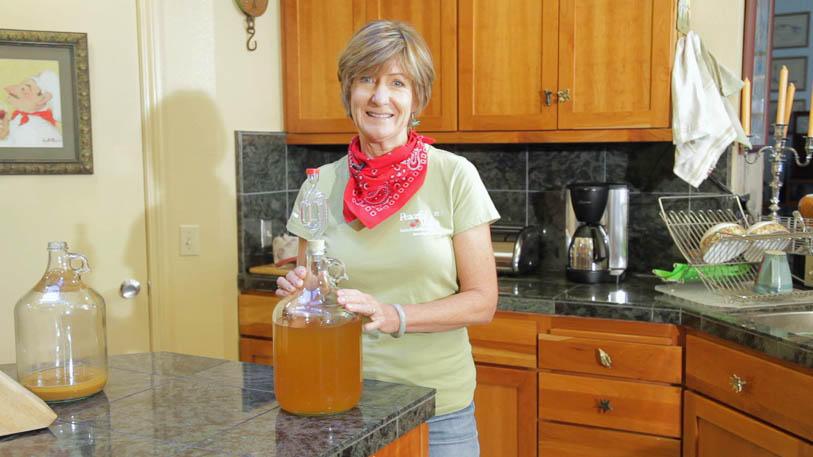In recent decades, hard cider has gained popularity, and now you can brew your own at home! Learn how to craft your perfect cider using fresh apples or pears.
Tricia brews hard cider in her home kitchen in our video and shows you how easy it is.
Hard Cider Equipment
To get started, you'll need a few essential pieces of equipment: a 1-gallon jug with a stopper, an auto siphon, an airlock, brewing yeast, sanitizer, and food-grade tubing. Keeping your equipment clean is crucial for a successful brew.
Keep Your Equipment Clean
Start with clean equipment and sterilize it before use. Avoid bleach, as it can impart unwanted flavors. Instead, use a brewing sanitizer like Star San.
Recipes for Hard Cider
Tricia's video covers the basics of making still, dry cider. Below are additional recipes for making different types of hard cider, from still to sparkling and sweet.
How to Make Still, Sweet Hard Cider
To sweeten cider without causing further fermentation, use non-fermentable sweeteners like xylitol. Be cautious, as xylitol is toxic to pets.
How to Make Sparkling, Dry Hard Cider
To carbonate your cider, add a sugar source before bottling. Options include table sugar, honey, maple syrup, or frozen apple juice concentrate.
How to Make Sparkling, Sweet Hard Cider
For a bubbly and sweet cider, combine xylitol with a sugar source to carbonate before bottling. Adjust sweetness to your preference.
Grow Your Own Apples & Pears for Unique Hard Cider
Want to make cider from scratch? Grow your own apples and pears! Learn about pressing cider and check out our selection of bare root apple trees and bare root pear trees for a home orchard.
Make your own hard cider this year and let us know how it turns out!



1 comment
Does anyone have experience using cherries for cider? Recipes?